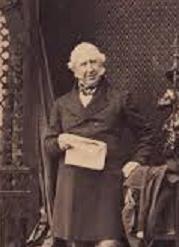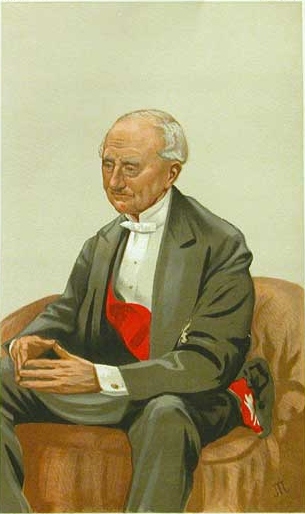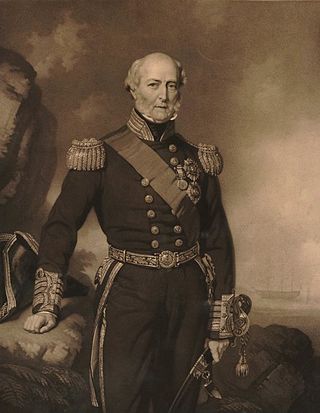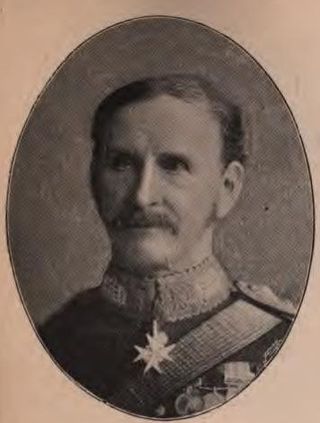
The usher of the Black Rod is an official in the parliaments of several countries of the Commonwealth of Nations. The title is often shortened to Black Rod, and in some countries, formally known as Gentleman Usher of the Black Rod or Lady Usher of the Black Rod. The position originates in the House of Lords in the Parliament of the United Kingdom. Equivalent positions exist in Australia, Canada and New Zealand.

The Most Honourable Order of the Bath is a British order of chivalry founded by King George I on 18 May 1725. Recipients of the Order are usually senior military officers or senior civil servants, and the monarch awards it on the advice of His Majesty's Government. The name derives from an elaborate medieval ceremony for preparing a candidate to receive his knighthood, of which ritual bathing was an element. While not all knights went through such an elaborate ceremony, knights so created were known as "knights of the Bath".

Admiral Sir James Whitley Deans Dundas, GCB was a Royal Navy officer. He took part in the Napoleonic Wars, first as a junior officer when he took part in the Anglo-Russian invasion of Holland in Autumn 1799 and later as a commander when he was in action at Copenhagen Dockyard shortly after the capture of that City in August 1807. He also served as Whig Member of Parliament for Greenwich and then for Devizes and became First Naval Lord in the First Russell ministry in July 1847 and in that role his service was dominated by the needs of Whig party. He was appointed Commander-in-Chief in the Mediterranean in 1852 and led all naval operations in the Black Sea including the bombardment of Sevastopol in October 1854 during the Crimean War.

Admiral of the Fleet Sir William Bowles, KCB was a senior Royal Navy officer and Conservative Party politician. After serving as a junior officer in the French Revolutionary Wars, he became commanding officer of the sloop HMS Zebra and took part in the bombardment of Copenhagen in September 1807 during the Napoleonic Wars. As commanding officer of the fifth-rate HMS Medusa, he took part in operations off the north coast of Spain and led a naval brigade in a raid on Santoña.
The Gentleman Usher of the Green Rod is the Gentleman Usher to the Most Ancient and Most Noble Order of the Thistle, established in 1687.
Field Marshal Sir John Forster FitzGerald,, was a soldier from Ireland who served as an officer in the British Army. He fought in the Peninsular War, seeing action at the Battle of Badajoz, the Battle of Salamanca and the Battle of Vitoria and commanding a brigade during the Battle of the Pyrenees before being captured by the French Army. He became Commandant of Quebec and then went on to be Commandant of Montreal, Quebec. He was given command of the 20th Regiment of Foot in Bombay before being given a divisional command in the Madras Army but shortly afterwards transferring to Bombay where he was given a divisional command of the Bombay Army. He later became a Whig Member of Parliament.

Admiral Sir Sydney Colpoys Dacres, was an officer of the Royal Navy who saw service during the Greek War of Independence, when he was involved in an attack on the Turkish forces at Morea, and later during the Crimean War. Born into a substantial naval dynasty during the Napoleonic Wars, he eventually rose to the rank of Admiral and became First Naval Lord. His only significant action as First Naval Lord was to press for the abolition of masts. He went on to be Visitor and Governor of Greenwich Hospital.

Admiral Sir Hastings Reginald Yelverton, was a Royal Navy officer. As a junior officer he took part in a major action against pirates off Candia in June 1826 and was involved in protecting British interests during the Portuguese Civil War during the early 1830s. He saw action in the Crimean War as Captain of one of the two ships that captured a Russian barque beneath the batteries at Ekenäs in Finland in May 1854. Then in July 1873 he took part in the suppression of the Cantonal Revolution in Cartagena. He became First Naval Lord in September 1876 and in that role implemented a series of economies demanded by the Disraeli ministry but was also involved in ordering the small, cheap and thoroughly unsuccessful ironclad Ajax-class battleships.

Admiral of the Fleet Sir George Francis Seymour, was a Royal Navy officer. After serving as a junior officer during the French Revolutionary Wars, Seymour commanded the third-rate HMS Northumberland under Admiral Sir John Duckworth at the Battle of San Domingo during the Napoleonic Wars. He also commanded the sloop HMS Kingfisher at the blockade of Rochefort and the fifth-rate HMS Pallas under Admiral Lord Gambier at the Battle of the Basque Roads. He then saw active service during the War of 1812.

Field Marshal John Byng, 1st Earl of Strafford was a British Army officer and politician. After serving as a junior officer during the French Revolutionary Wars and Irish Rebellion of 1798, he became Commanding Officer of the Grenadier Battalion of the 3rd Regiment of Foot Guards during the disastrous Walcheren Campaign. He served as a brigade commander at the Battle of Vitoria and then at the Battle of Roncesvalles on 25 July 1813 when his brigade took the brunt of the French assault and held its position for three hours in the early morning before finally being forced back.

Admiral of the Fleet Sir Houston Stewart, was a Royal Navy officer and briefly a Liberal Party Member of Parliament. After serving as a junior officer in the Napoleonic Wars, Stewart became commanding officer of the third-rate HMS Benbow in the Mediterranean Fleet and took part in the bombardment of Acre during the Egyptian–Ottoman War. He went on to be Captain-Superintendent of Woolwich Dockyard and then Controller-General of the Coastguard.
Air Vice Marshal Sir Richard Charles Fairfax Peirse, was a senior Royal Air Force officer who served as Defence Services Secretary from 1985 to 1988.

Sir Henry Frederick Stephenson was a Royal Navy officer, courtier, and Arctic explorer.

Colonel Sir Charles Wyndham Murray, was a British Army officer and politician. He served as a Conservative Member of Parliament MP for Bath from 1892 to 1906 and as Gentleman Usher of the Scarlet Rod of the Order of the Bath from 1913 until his death.

Vice-Admiral Sir Thomas Herbert, KCB, was a British Royal Navy officer. He served in the Napoleonic Wars, War of 1812, and First Anglo-Chinese War. From 1847 to 1849, he was commodore of the South East Coast of America Station. Herbert served as Member of Parliament for Dartmouth as a Conservative from 1852 to 1857.

Field Marshal Sir Charles Yorke GCB was a senior British Army officer. He fought in many of the battles of the Peninsular War and of the Hundred Days, seeing action as an extra aide-de-camp to Major-General Frederick Adam, commander of the 3rd Light Brigade, at the Battle of Waterloo. After that he became Deputy Commander of the British forces in South Africa during the latter stages of the Eighth Xhosa War. He went on to be Military Secretary, ultimately earning promotion to field marshal for his competence in that role.
George Frederick Beltz, KH was an English genealogist, appointed Lancaster Herald in 1822.

Rear-Admiral Sir Alexander "Sandy" Henry Charles Gordon-Lennox was a British Royal Navy officer who became President of the Royal Naval College, Greenwich. He was Serjeant at Arms of the House of Commons from 1962–76.
Admiral Sir Hugh Pigot was an officer of the Royal Navy, who served in the French Revolutionary and Napoleonic Wars, and the War of 1812.

Admiral Anthony Maitland, 10th Earl of Lauderdale was a British naval officer who served during the French Revolutionary War, Napoleonic Wars and War of 1812. He also participated in the Bombardment of Algiers. He served as Member of Parliament for Haddington Burghs between 1813 and 1818 and Berwickshire between 1826 and 1832. From 1830 until he was promoted to rear-admiral in 1841 he was a naval aide-de-camp to at first King William IV and then Queen Victoria.













